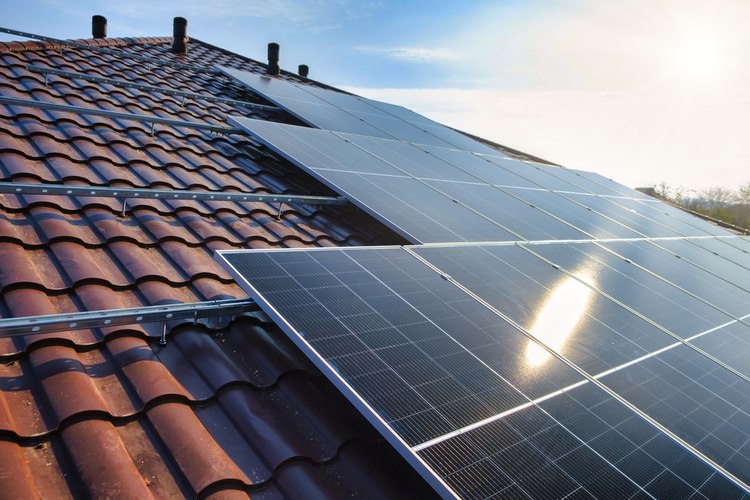Affordable Solar Panels Options and How They Can Reduce Your Energy Costs
Solar energy has become an increasingly popular and accessible option for homeowners looking to reduce their electricity bills and carbon footprint. With advancements in technology and increased production, solar panels are more affordable than ever before. This article explores various solar panel options available to consumers and how they can contribute to significant energy cost savings over time.

What are the most affordable solar panel options?
When considering affordable solar panels, it’s essential to look at both the upfront costs and long-term savings. Polycrystalline solar panels are often the most budget-friendly option for homeowners. These panels are made from multiple silicon crystals, making them less expensive to produce than their monocrystalline counterparts. While they may be slightly less efficient, polycrystalline panels still offer excellent value for money and can significantly reduce energy costs.
Another affordable option is thin-film solar panels. These panels are lightweight and flexible, making them ideal for certain applications where traditional panels might not be suitable. Although they have lower efficiency rates compared to crystalline panels, thin-film technology continues to improve, and their lower production costs make them an attractive option for budget-conscious consumers.
How do solar panel prices vary across different types?
Solar panel prices can vary significantly depending on the type, brand, and efficiency of the panels. Monocrystalline panels, known for their high efficiency and sleek appearance, tend to be the most expensive option. However, their superior performance in low-light conditions and higher power output per square meter can justify the higher price for some homeowners.
Polycrystalline panels fall in the mid-range price category, offering a balance between cost and efficiency. These panels are a popular choice for residential installations due to their affordability and reliable performance.
Thin-film panels are generally the least expensive option upfront but may require more space to generate the same amount of power as crystalline panels. The cost-effectiveness of thin-film technology depends on the specific installation requirements and available space.
What factors influence solar panels options and their affordability?
Several factors can impact the affordability and options available for solar panel installations:
-
Geographic location: Areas with higher sun exposure may require fewer panels, reducing overall costs.
-
Roof condition and orientation: A south-facing roof with optimal tilt can maximize energy production, potentially allowing for fewer panels and lower costs.
-
Local incentives and rebates: Government programs and utility company incentives can significantly reduce the upfront costs of solar panel installation.
-
Energy consumption: Households with higher energy needs may require larger systems, affecting the overall cost but potentially leading to greater long-term savings.
-
Installation costs: Labor and equipment expenses can vary by region and installer, impacting the total cost of the solar panel system.
-
Grid connection options: Net metering policies and the availability of battery storage solutions can influence the overall affordability and return on investment of solar panel systems.
How can solar panels reduce your energy costs?
Solar panels can substantially reduce energy costs by generating clean electricity from sunlight, thereby decreasing reliance on grid power. The extent of these savings depends on various factors, including the size of the solar system, local electricity rates, and energy consumption patterns.
Once installed, solar panels can produce electricity for 25-30 years or more, providing long-term savings on utility bills. In many cases, homeowners can eliminate their electricity bills entirely or even earn credits from their utility company through net metering programs.
Additionally, solar panels can protect against rising energy costs. As utility rates continue to increase, solar panel owners maintain a fixed cost for their electricity production, potentially saving thousands of dollars over the system’s lifetime.
What are some real-world examples of solar panel options and their costs?
To provide a clearer picture of solar panel options and their associated costs, let’s compare some popular solar panel brands and their typical pricing:
| Brand | Panel Type | Efficiency | Estimated Cost per Watt |
|---|---|---|---|
| Canadian Solar | Polycrystalline | 16-17% | $0.70 - $0.80 |
| LG | Monocrystalline | 19-22% | $0.90 - $1.10 |
| First Solar | Thin-film | 18-19% | $0.60 - $0.70 |
| SunPower | Monocrystalline | 20-23% | $1.00 - $1.30 |
| Trina Solar | Polycrystalline | 17-18% | $0.65 - $0.75 |
Prices, rates, or cost estimates mentioned in this article are based on the latest available information but may change over time. Independent research is advised before making financial decisions.
It’s important to note that these prices are for the panels only and do not include installation costs, which can vary significantly based on location and system size. The total cost of a solar panel system typically ranges from $15,000 to $25,000 for an average-sized home, before applying any incentives or rebates.
How to choose the right affordable solar panel option for your home?
Selecting the most suitable and affordable solar panel option for your home involves considering several factors:
-
Energy needs: Assess your household’s energy consumption to determine the required system size.
-
Available roof space: Consider the efficiency of different panel types in relation to your available roof area.
-
Budget: Balance upfront costs with long-term savings potential.
-
Local climate: Choose panels that perform well in your specific weather conditions.
-
Warranty and durability: Look for panels with strong warranties and proven longevity.
-
Installer reputation: Select a reputable installer who can guide you through the options and provide quality installation.
-
Financing options: Explore various financing methods, including solar loans, leases, or power purchase agreements, to find the most affordable solution for your situation.
By carefully considering these factors and exploring the various affordable solar panel options available, homeowners can make informed decisions that lead to significant energy cost reductions and long-term financial benefits. As solar technology continues to advance and prices decrease, the potential for substantial savings through solar energy adoption becomes increasingly accessible to a broader range of consumers.




